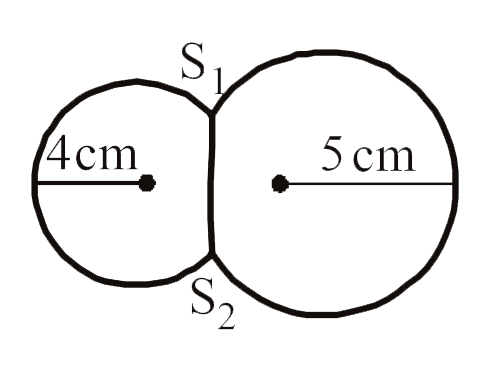A
B
C
D
Text Solution
Verified by Experts
The correct Answer is:
|
Topper's Solved these Questions
DRILL TEST - 4
NEET MAJOR TEST (COACHING)|Exercise PHYSICS|25 VideosView PlaylistDRILL TEST 1
NEET MAJOR TEST (COACHING)|Exercise PHYSICS|45 VideosView Playlist
Similar Questions
Explore conceptually related problems
Knowledge Check
A
B
C
D
Submit
A
B
C
D
Submit
A
B
C
D
Submit
Similar Questions
Explore conceptually related problems
NEET MAJOR TEST (COACHING)-DRILL TEST -1-PHYSICS
- Two soap bubbles of radii r(1) and r(2) equal to 4 cm and 5 cm are to...
03:07
|
Playing Now - Each of the four particles move along x axis. Their coordinates (in me...
Text Solution
|
Play - The random error in the arithmetic mean of 100 observations is x, then...
02:19
|
Play - A charge Q is distributed uniformly within the material of a hollow sp...
05:49
|
Play - The instant of time at which acceleration and velocity are perpendicul...
02:57
|
Play - A square loop with edge length 'a' meter. The resistance of wire ABC i...
Text Solution
|
Play - A physical quantity A is related to four observable a,b,c and d as fol...
02:00
|
Play - A circuit that contains three identical resistors with resistance R = ...
03:37
|
Play - An air column in a pipe, which is closed at one end will be in resonan...
02:48
|
Play - A potentiometer wire AB is 100 cm long and has total resistance of 10O...
02:36
|
Play - The volume of a block of a metal changes by 0.12% when it is heated th...
03:27
|
Play - The truth table for the following logic circuit is :-
03:02
|
Play - A Zener diode is connected to a battery and a load as shown below. The...
03:22
|
Play - An optical system consists of a thin convex lens of focal length 30 cm...
04:41
|
Play - The de-Brogile wavelength associated with electron in the n = 4 level ...
01:08
|
Play - The figure, shows a metre bridge circuit, with AB = 100 cm, x = 12 Ω ...
06:01
|
Play - Thre stones A, B and C are simultaneously projected from same point wi...
02:36
|
Play - In a sonometer wire the fundamental frequency of the wire is 260 Hz. I...
02:11
|
Play - If the energy levels of a hypothetical one electron atom are shown in ...
Text Solution
|
Play - In given circuit initially switch S(1) is closed for long time and th...
05:06
|
Play
